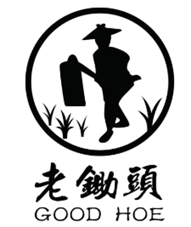SUN Ruirui, 25 April 2025, first published by WTR
• The proportion of the copyrighted work contained in a disputed mark has no bearing on the assessment of copyright infringement
• The exact reproduction of a copyrighted work inside a disputed mark is sufficient to establish copyright infringement
• “Substantial similarity” under the Copyright Law and “trademark similarity” under the Trademark Law should not be confused
Article 32 of the Trademark Law provides that a trademark should not infringe on another’s prior rights, including copyright. Prior copyright owners may attack a trademark – applied for or registered – for dissimilar goods/service. To do so, they need to prove that:
1. the trademark applicant had access to the copyrighted work; and
2. the disputed mark is substantially similar to the claimed copyrighted work.
In some cases, the copyrighted work is only an element of the disputed mark, and the issue is therefore to determine whether the presence of the copyrighted work in the mark justifies an affirmation of infringement. In a recent case, the Supreme People’s Court affirmed that the proportion of the copyrighted work contained in a disputed mark has no bearing on the assessment of copyright infringement.
Background
On 24 July 2019 Chinese company Heilongjiang Mangrove Animal Husbandry Ltd (‘Mangrove’) applied for the registration of the mark 耕 (and device), as shown below, in connection with fertilisers-related goods in Class 1. The trademark, which contains the Chinese character ‘耕’ (‘plough’) and the silhouette of a farmer wearing a straw hat, holding a hoe and working on farmland, was registered on 21 March 2020.

The disputed mark
On 18 December 2020 an individual, Li Feng, president of a farmers' cooperative specialising in yam cultivation, filed a request for invalidation of the mark, citing his prior copyright entitled “good hoe” (shown below), which he had created on 11 March 2016. Li contended that the registration of the disputed mark violated Article 32 (prior rights).

The prior work
On 15 October 2021 the CNIPA rejected Li's application, holding that the image in the disputed trademark was not substantially similar to the copyrighted image in the sense of the Copyright Law.
Li brought administrative litigation proceedings before the Beijing IP court, which overturned the CNIPA’s decision, finding a substantial similarity between the disputed mark and the prior copyrighted work.
The CNIPA appealed to the Beijing High Court, which ruled in favour of the CNIPA on 28 February 2024. The appeal court reasoned that the prominently featured Chinese character ‘耕’ was the distinguishing part of the disputed trademark. In contrast to the more prominent overall visual effect of the circular contour and green farmland, the image of a farmer holding a hoe was very small and inconspicuous. Therefore, the disputed mark and the claimed prior work were distinctively different in terms of structure and layout, composition elements and overall effects. As a result, they were not substantially similar.
Supreme People’s Court decision
Li filed a retrial application before the Supreme People’s Court. On 24 March 2025 the court revoked the decision of the Beijing High Court and confirmed the first-instance judgment:
1. The prior work, which featured the silhouette of a farmer wearing a straw hat, holding a hoe and working on farmland, was aesthetic and original, and thus constituted a work of fine art in the sense of the Copyright Law.
2. The disputed mark comprised a component that was almost identical to the graphic part of the prior work, making it substantially similar in the sense of the Copyright Law.
2. The prior copyrighted work had been registered on 22 July 2016 and made public prior to the application date of the disputed mark. Therefore, Mangrove had access to Li’s copyrighted work before filing the disputed mark.
4. The proportion of the graphic element featuring a farmer holding a hoe in the disputed mark had no bearing on the assessment of copyright infringement.
Comment
It seems that the CNIPA and the appeal court confused “substantial similarity” in the context of the Copyright Law with “trademark similarity” in the context of the Trademark Law. Substantial similarity between two conflicting works is to be strictly assessed by a detailed comparison of the works, while trademark similarity is based on the assessment of the likelihood of confusion, which is a much more flexible method of comparison. In the present case, the Supreme People’s Court was satisfied that the exact reproduction of the copyrighted work inside the disputed trademark was sufficient to establish copyright infringement; in contrast, from a trademark comparison point of view (with the likelihood of confusion in mind), the outcome could have been different.
Other cases illustrate the difference between substantial similarity and risk of confusion. In Cars v The Autobots (2017), the infringers raised the defence that the poster at issue would not cause confusion among consumers, owing to other distinguishable elements used in the promotion of the movie. The Shanghai IP Court found the defence without merit and, focusing on the substantial similarities of the cartoon images, affirmed copyright infringement.
